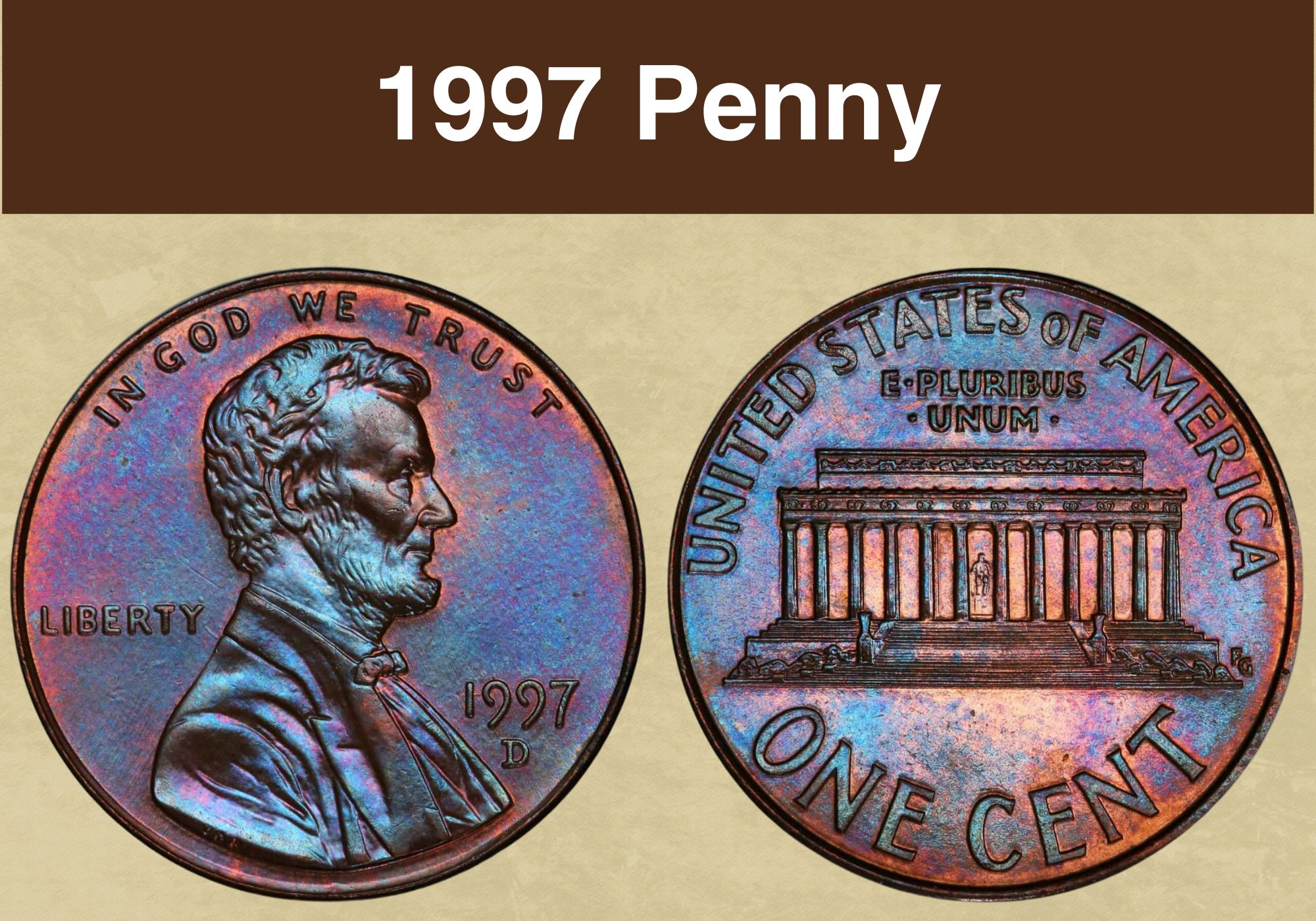
Coin Value Contents Table
1997 coins are less than three decades old at the time of writing this. In the world of numismatics, this can’t possibly mean that they are worth anything above their face value or melting value, right? For something like the 1997 penny value, that should mean just one cent.
Yet, it’s not that uncommon to see one-cent coins from 1997 selling for hundreds or even thousands of dollars today. How does this even happen? We’ll explore the 1997 penny value below, what goes into it, what details and errors you’d want to look at, what are the main variations of this coin, and more.
1997 Penny Value Chart |
||||
| Mint mark | Good | Fine | Extremely Fine | Uncirculated |
| 1997 “D” Penny Value | $0.01 to $0.05 | $0.05 to $0.10 | $0.15 to $1 | $2.50 to $7.50 and above |
| 1997 No Mint Mark Penny Value | $0.01 to $0.05 | $0.05 to $0.10 | $0.15 to $7.50 | $10 to $475 and above |
| 1997 “S” Proof Penny Value | n/a | n/a | $0.25 to $2 | $2.50 to $450 and above |
As you can see, the vast majority of these coins are indeed just worth their face value of $0.01. This isn’t surprising given that billions of these pennies are still in circulation and can be found in most people’s pockets at any given time.
Nevertheless, some 1997 penny coins can also command relatively high prices with the averages for uncirculated 1997 pennies often going into the 2-digit range and even in the hundreds. In fact, some of these coins have even been sold for thousands of dollars because of certain rare errors and specifics on them. So, let’s go over the different varieties below.
1997 Penny Grading
Like most other coins, 1997 pennies are usually graded on the 1-to-70 Sheldon coin grading scale. This scale ranks coins with grades between 1 and 70 based on how well-preserved they are and how clean their details look. The letters in front of the grade such as MS, PR, RD usually refer to specific conditions such as Mint State, Proof, a red color, etc.
For a more visual explanation of how coins are graded. Either way, once a coin gets graded, the next step is to look for the presence of any unique markings or errors that may further increase its value.
| # | Grade |
|---|---|
| 1 | Basal State-1 |
| 2 | Fair |
| 3 | Very Fair |
| 4, 5, 6 | Good |
| 7, 8, 10 | Very Good |
| 12, 15 | Fine |
| 20, 30 | Very Fine |
| 40 | Extremely Fine |
| 50 | About Uncirculated |
| 60 | Mint State |
| 65 | Mint State |
| 70 | Mint State |
Please check our grading guides to know your coin scale, It’s the necessary step to know the exact value of your coin.
Check out now: How to Grade Lincoln Wheat Penny?
1997 “D” Penny Value
One of the two most common types of 1997 Lincoln pennies are the ones that bear the “D” mint mark of the Denver Mint. There were a total of 4,576,555,000 such coins made in 1997, which, together with the recency of the minting year means that there are a whole lot of these coins around today.
Additionally, the design of these coins is exactly the same as that of Memorial pennies from previous years. The obverse bears the original Victor D. Brenner design made for the first Lincoln wheat penny in 1909 – it has President Lincoln’s right-facing portrait with the words “In God we trust” above and “Liberty” to the left behind him. The date, 1997 in this case, is written on the lower right.
The reverse is newer, relatively speaking – it was made for Lincoln’s 150th anniversary in 1959 and it features the famous Lincoln Memorial, hence why Lincoln pennies made between 1059 and 2008 are often called Memorial pennies. Just above the image of the building is minted the motto “E Pluribus Unum” (From many, one) and further above it – “United States of America”.
The coin’s value of “One Cent” is written below the Memorial at the bottom of the reverse side and the “D” mint mark is placed to the right of the building, near the edge.
All of this is very much what you’d expect from a Lincoln penny and it is a further reason why these coins don’t have that high of a value – they are almost always only worth their face value and can only occasionally exceed that and be evaluated at a few dollars per coin if they are of pristine uncirculated quality.
Still, every once in a while, people do find an exceedingly valuable 1997 “D” penny. Such value is usually driven by the presence of some especially desirable manufacturing errors or other specific variations such as the famous “Full Steps” variety – a coin of such spectacular quality that the full steps of the Lincoln Memorial building on the reverse side of the coin are clearly visible.
Another factor that can bump up these coins’ prices is their color. That’s because, while all 1997 pennies are made of copper-plated zinc (so, 97.5% zinc core with 2.5% copper plating), the way each individual coin has been handled and stored can affect the copper’s color more to the red spectrum or more toward brown. As you’d expect, reddish pennies are also seen as more valuable.
The most valuable 1997 “D” penny we could find to date is a red MS 68 (Mint State coin with 68 quality grade out of 70) that was sold at an auction for $863. Few other Denver-made pennies from 1997 can command such prices, however.
1997 No Mint Mark Penny Value
Looking at the value chart above, you’d notice that 1997 pennies with no mint marks are significantly more valuable than those with the “D” mint mark. This may lead a newcomer to numismatics to think that the lack of a mint mark is some sort of rare error that makes coins extra valuable but that’s not really the case.
Instead, the lack of a mint mark in many coins is merely the “mint mark” of the Philadelphia Mint. We’re not sure why this mint continued to just not place any mint marks on their coins for decades but, as no other mint does that, this simply means that a coin with no mint mark was made in Philadelphia.
The Philly mint eventually stopped this practice and started introducing a “P” mint mark on most of their other coins – usually in the 1980s – but one-cent coins kept getting minted with no mint marks in Philadelphia. The only exception was the 2017 Philly-made penny – with an impressive mintage of 4,361,220,000 – which did have a “P” mint mark to commemorate the Philadelphia Mint’s 225th anniversary.
So, if the lack of a mint mark on the 1997 Lincoln penny isn’t really anything special or noteworthy, why are these coins more valuable than their Denver counterparts? Is it because there were fewer Philly-made pennies that year and they are therefore rarer?
That’s not it either. The Philadelphia Mint made 4,622,800,000 Lincoln pennies in 1997 – about 50 million more than the Denver Mint. So, if anything, these coins are even more numerous than those with the “D” mint mark.
The design of both pennies is also the same – Brenner’s portrait of Lincoln on the obverse and Gasparro’s Lincoln Memorial on the reverse. The size parameters and metal composition are identical too – 97.5% zinc with 2.5% copper, 2.5 grams of weight, 19 mm diameter, a plain edge, and so on.
So, what’s the difference?
Mostly, it’s a matter of quality and the presence of some valuable manufacturing errors in Philly-made coins that aren’t as present in coins made in Denver. These two things can sound like contradictions, of course, but they aren’t. When we’re talking about quality, we mean the general visual quality of the coin’s look, i.e. how cleanly it has been minted.
The presence of certain rare errors, however, is something that just happens from time to time and can produce some very interesting one-of-a-kind coins. This can happen in either mint and we can often see the values of different coins made in different mints switch year on year. Sometimes, Denver-made pennies are of higher quality and more valuable errors, other times – it’s Philly-made pennies.
So, with 1997 no-mint-mark pennies, it’s not all that uncommon to find coins that can sell for several dollars even if their quality isn’t top-notch. What’s more, truly mint state uncirculated 1997 pennies made in Philadelphia can have an expected average value in the hundreds with some going into the 4-digit range.
For example, the most valuable 1997 no-mint-mark penny to date was sold for $6,360 in 2021. It was a red MS 69 graded coin.
Also read: 13 Most Valuable Wheat Penny Worth Money
1997 “S” Proof Penny Value
The third and also quite valuable type of 1997 penny is the proof penny made by the San Francisco Mint. There were only 2,796,678 of these coins made that year which is a much lower quantity compared to the previous two variants but that’s normal as proof coins aren’t meant to go into circulation.
Instead, proof coins are mostly made just for display purposes and for collectors. They are also minted with completely different minting dies that get dipped in acid, are hand-polished, and strike the coins twice for the cleanest possible look. This process is more expensive than the minting of regular strike coins too, which is why the Mint needs to sell these proofs to collectors to make its money back.
If proof coins are so fewer and more special than regular strike coins, however, why is their price not significantly higher than that of Philly-made 1997 regular pennies? In fact, the latter are more valuable on average than their “better” proof counterparts.
The answer is indeed in the coins’ rarity – while there were billions of no-mint-mark regular strike pennies produced in Philadelphia, only a handful of them have been preserved in their uncirculated mint condition. In comparison, almost all of the proofs made in San Francisco are kept in top-notch quality, meaning that there are many more uncirculated proofs than there are uncirculated regular strike pennies.
Still, proofs being proofs, there is a minimal value these coins don’t go under, even when they aren’t in perfect condition. So, you can expect most 1997 proof pennies you encounter to be worth somewhere between several dozen and several hundred dollars. The most expensive one we’ve seen so far was sold for $1,898 in 2004 at an auction.
Also read: 12 Most Valuable Lincoln Penny Worth Money
Rare 1997 Penny Error List
There are lots of errors that can be found on a 1997 penny, even if not all of them are very highly valued by collectors. Here’s a cool video showcasing some of them and a few more examples from us:
1997 Penny Doubled Die Error
This error happens when the coin’s planchet has shifted a bit between the two strikes of the minting die. In those cases, some parts of the coin may appear doubled or a bit blurry – be it some letters or numbers or potentially Lincoln’s ear, resulting in the valuable “Doubled Ear” error.
1997 Penny Off-Center Error
An off-center error is what happens when the coin’s planchet has shifted not between the strikes of the minting die but before them. In those cases, the coin’s design isn’t blurry or distorted but it does get printed a bit off-center. As long as the whole thing is still visible, however, this error can be quite valuable.
1997 Penny Struck on the Wrong Planchet Error
It’s quite common for coins of any denomination to accidentally get minted on a different planchet – be it of a different US currency or even on a foreign currency planchet as these are also often made in the US.
Such coins are often called dual denomination or doubled denomination coins too. For the 1997 penny, the most common examples of this error are the accidental minting on a dime planchet or a foreign planchet.
Also read: 17 Most Valuable Indian Head Penny Worth Money
Where to Sell Your 1997 Penny?
Now that you know the value of your coins, do you know where to sell those coins online easily? Don’t worry, I’ve compiled a list of these sites, including their introduction, pros, and cons.
Check out now: Best Places To Sell Coins Online (Pros & Cons)
1997 Penny FAQ
What makes a 1997 penny valuable?
The two key factors that can make a 1997 penny valuable are quality and the presence of interesting manufacturing errors. If you’ve got a 1997 penny of a near-mint or uncirculated state, it is certain to be worth more than its face value. From there, if the coin also has a cool production error, it can even be worth hundreds or thousands of dollars.
Should you hold on to the 1997 penny in your pocket?
In most cases – no, there is no need as that coin is most likely just worth its face value of $0.01. In some instances, however, high-quality pennies with some unique features are definitely worth holding on to as their value is almost certainly going to keep rising with time.
Also read: 11 Most Valuable Wheat Penny Errors

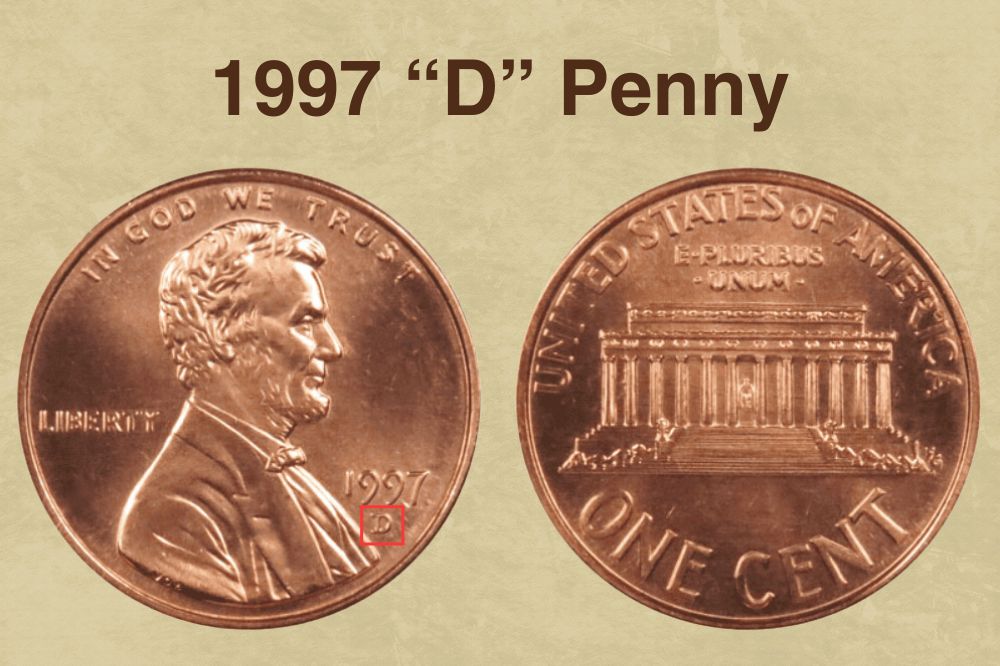
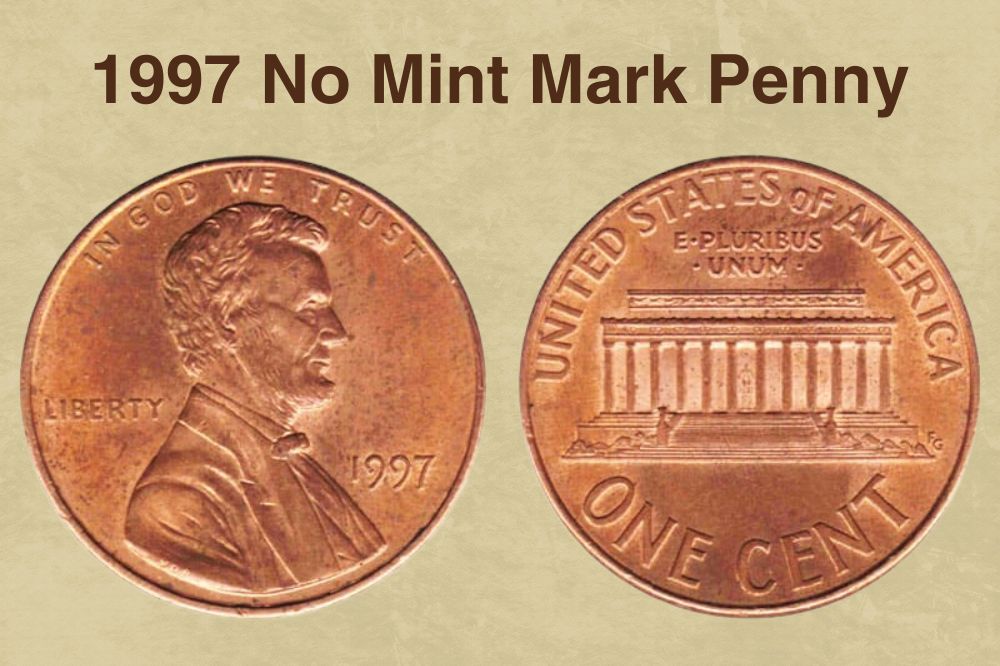
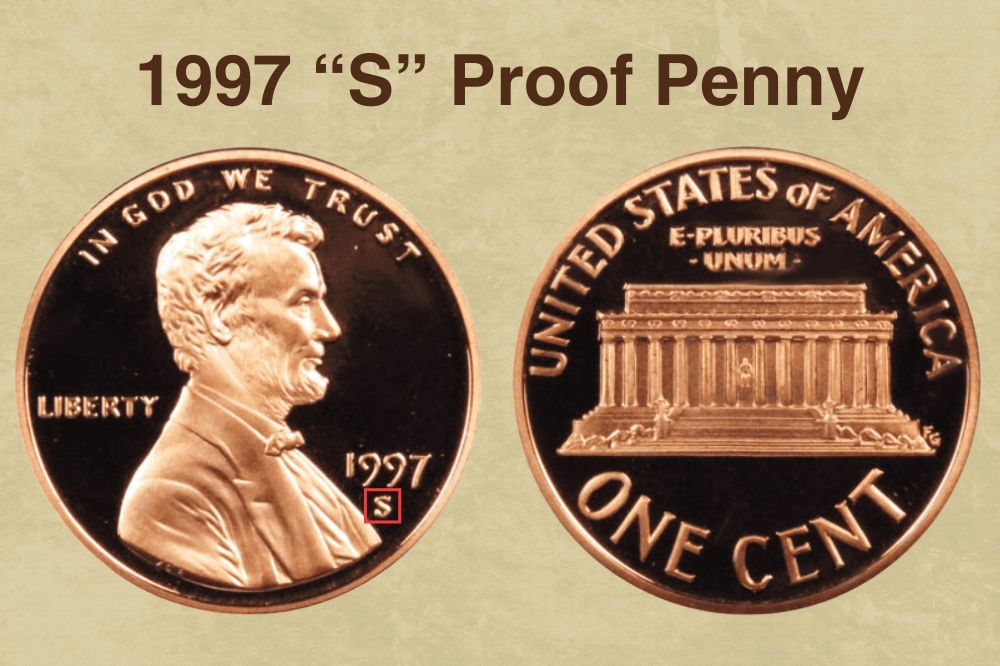
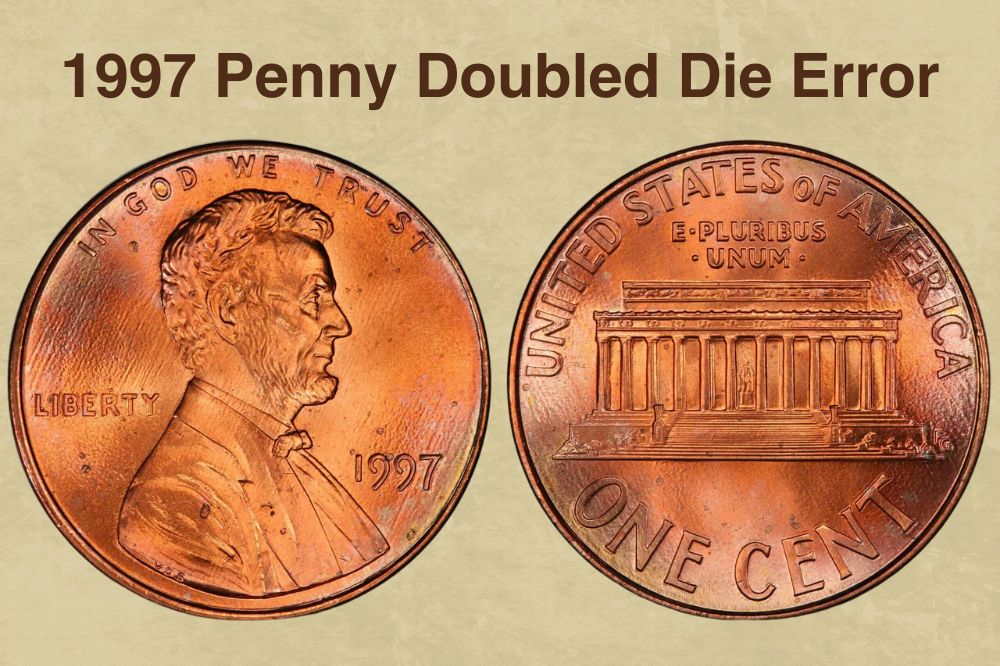
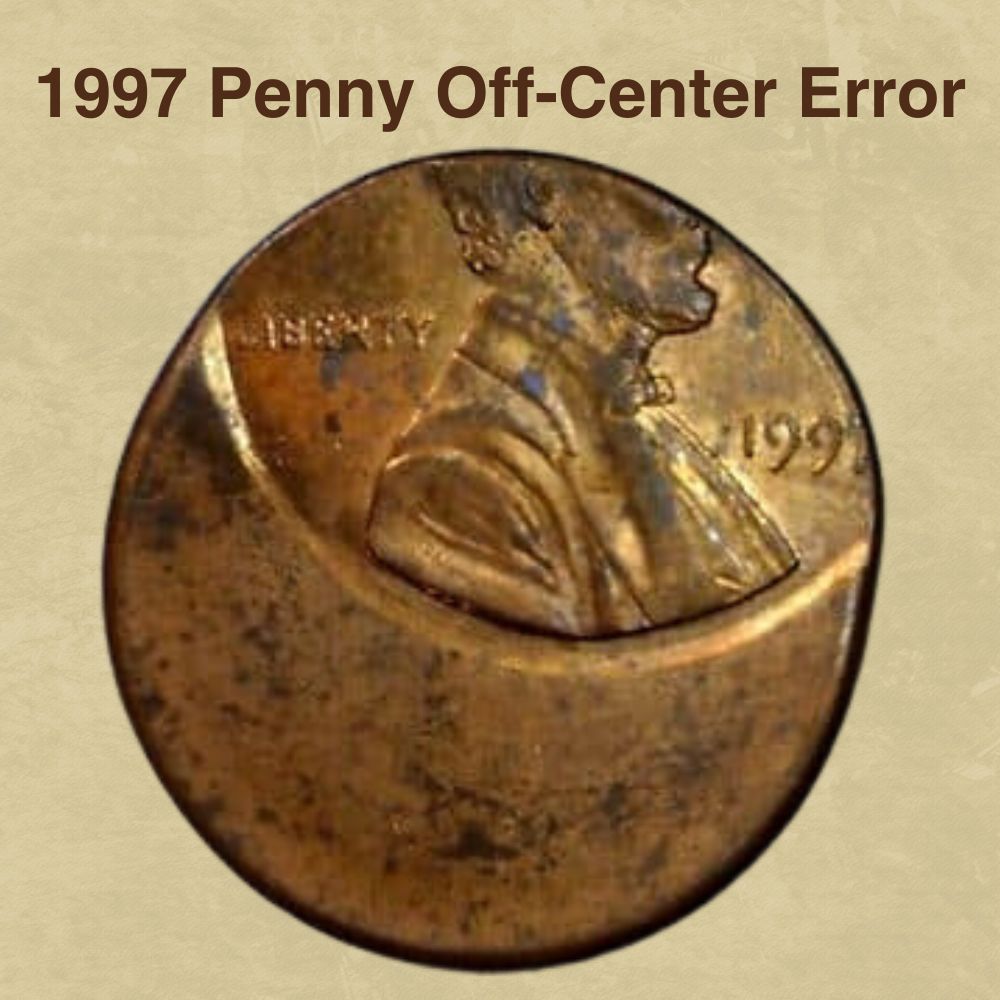
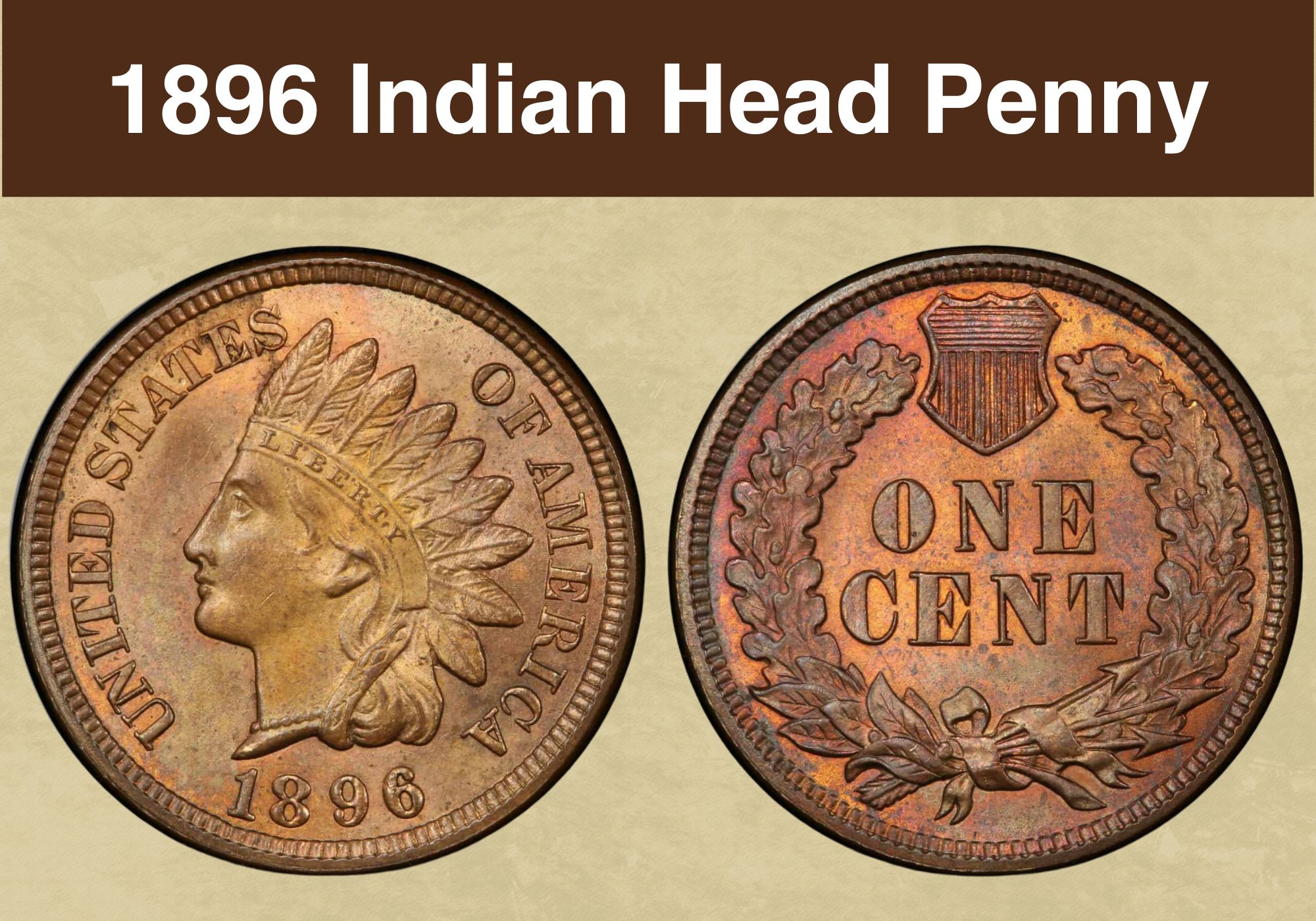
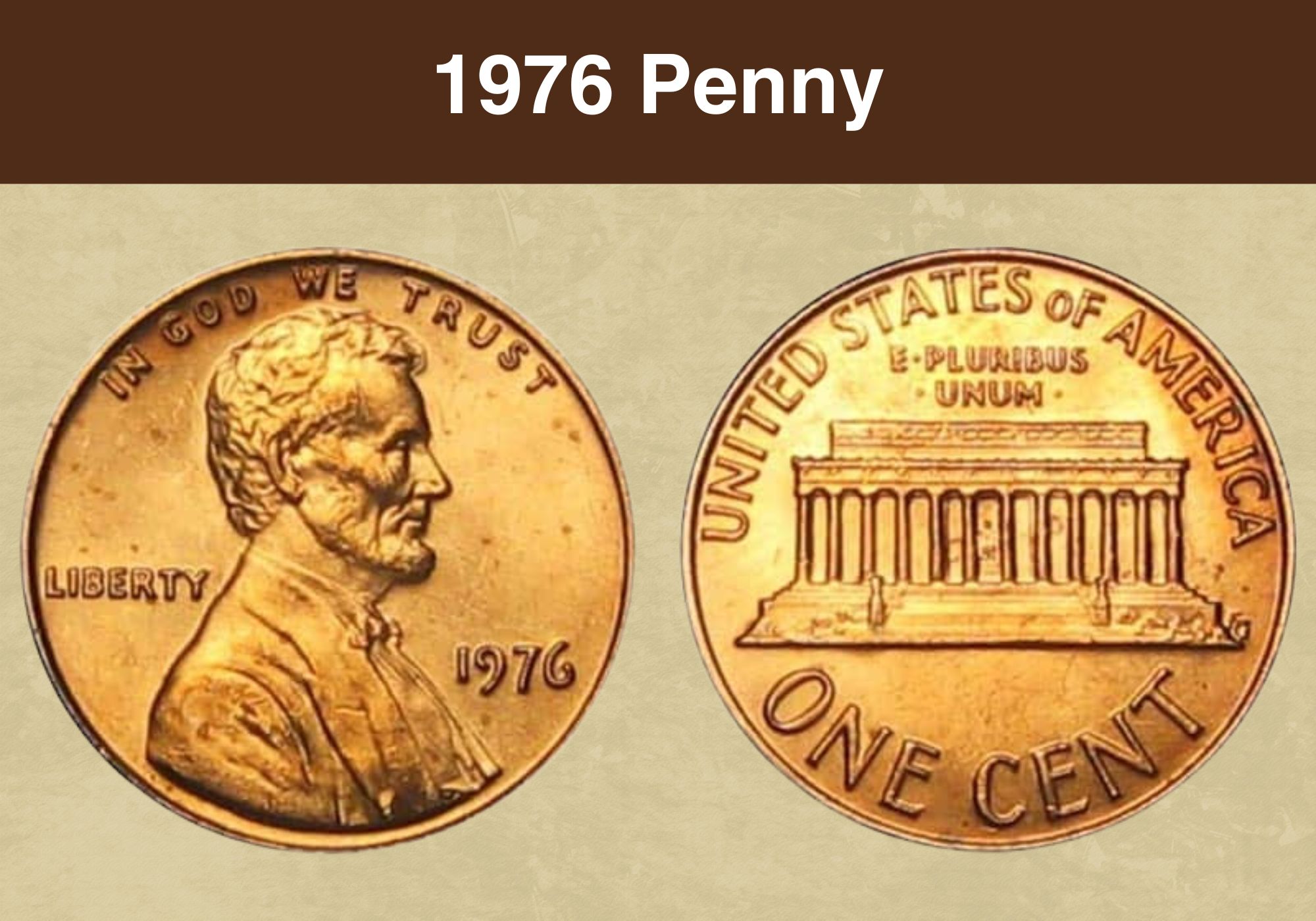
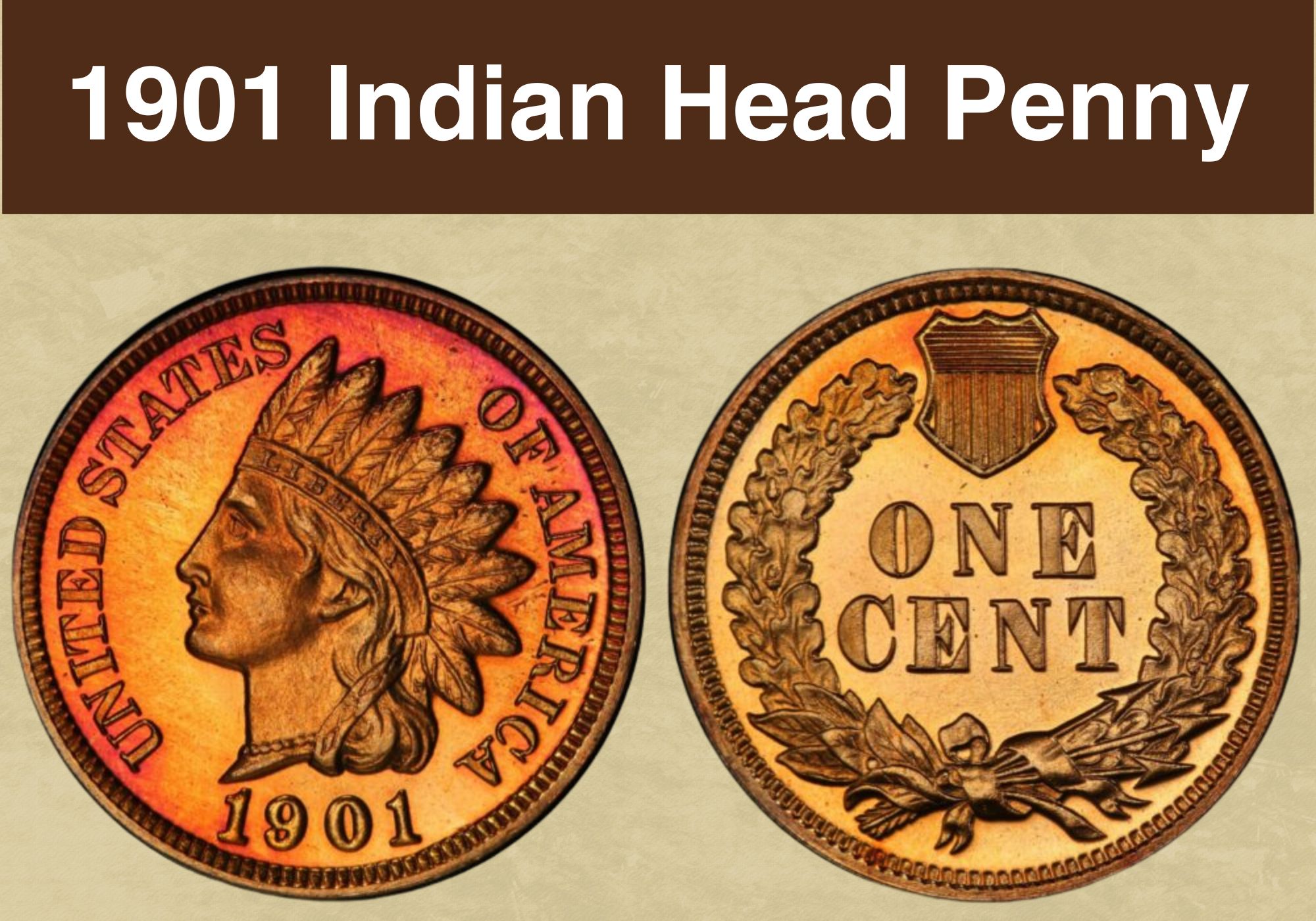
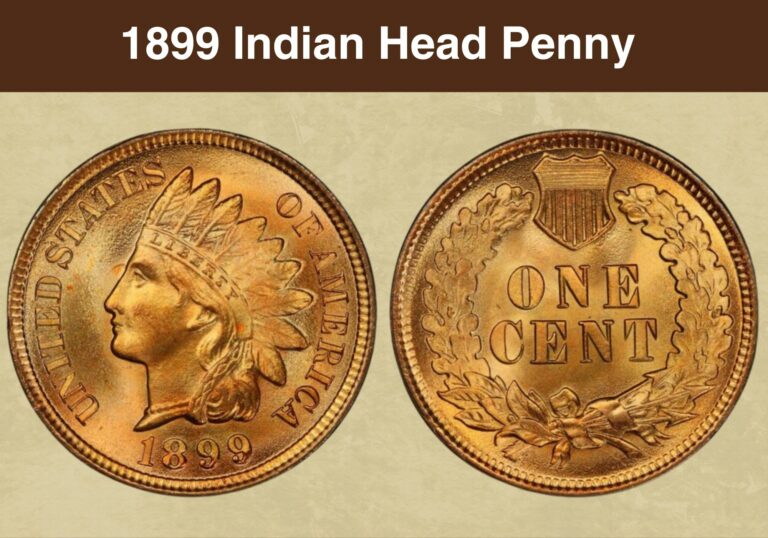
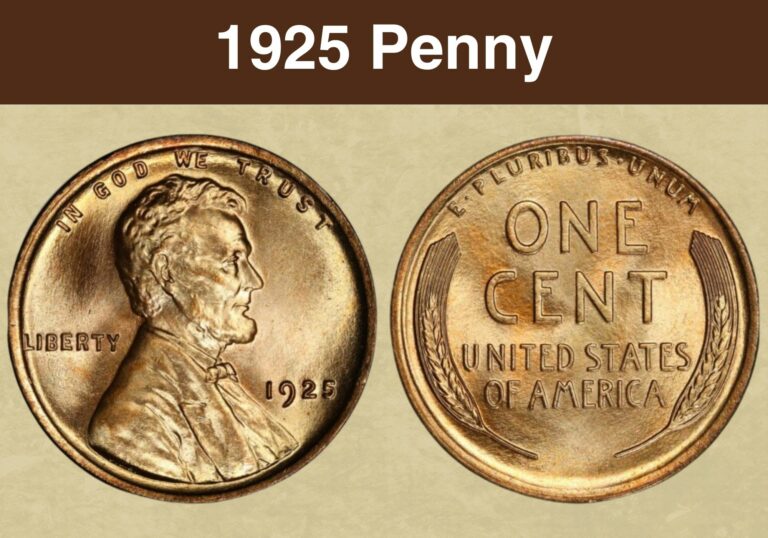
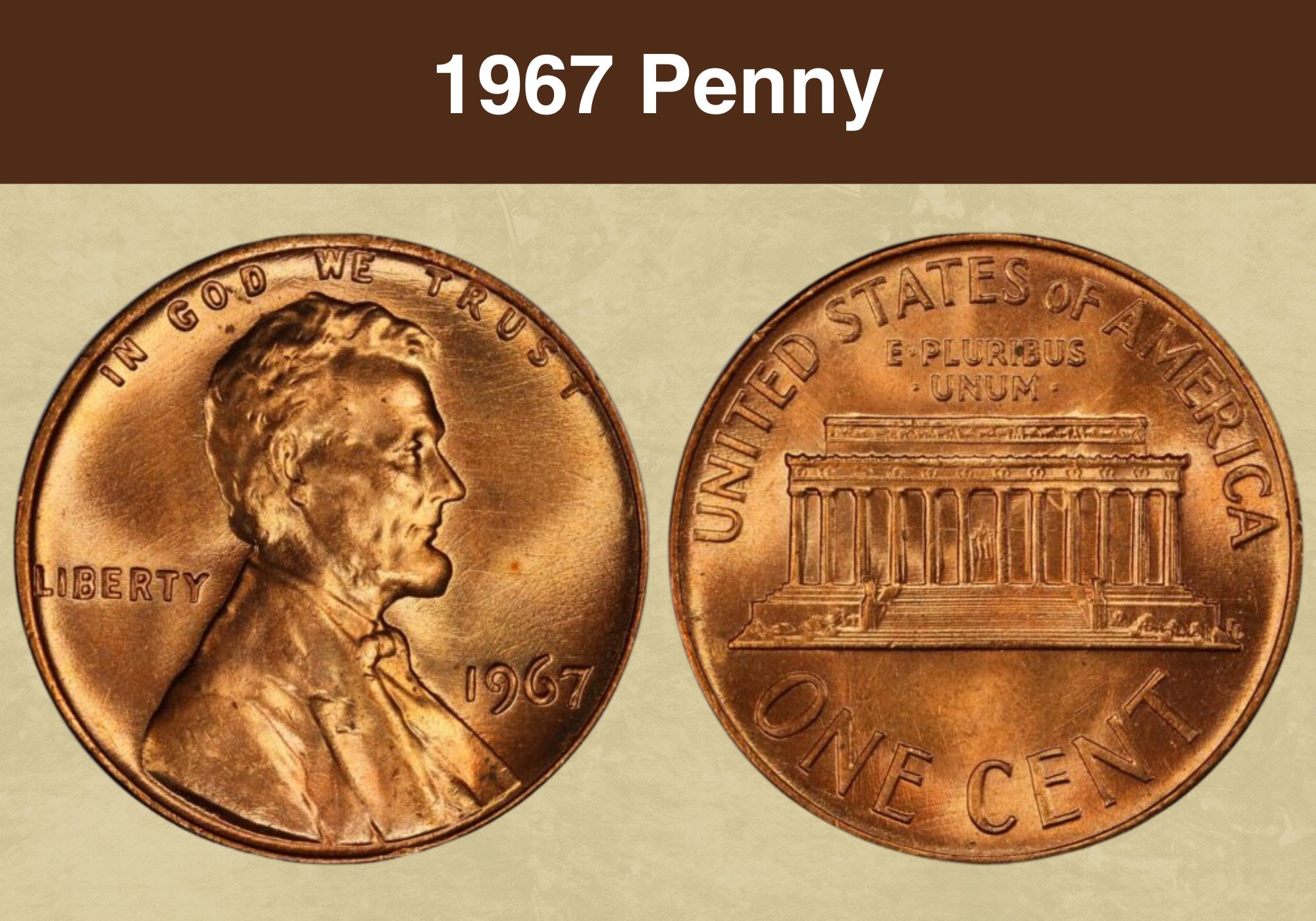
19 £.97 with two different different colors on the front and no mint mark and the rim is above the penny what is that worth?